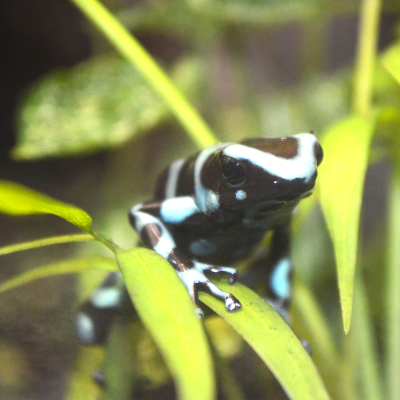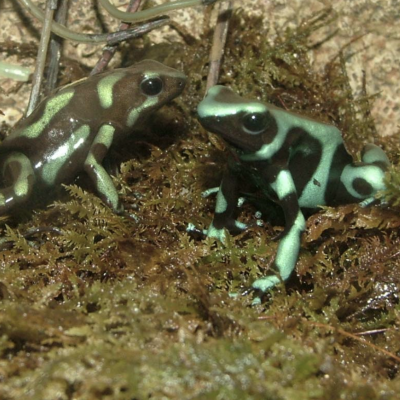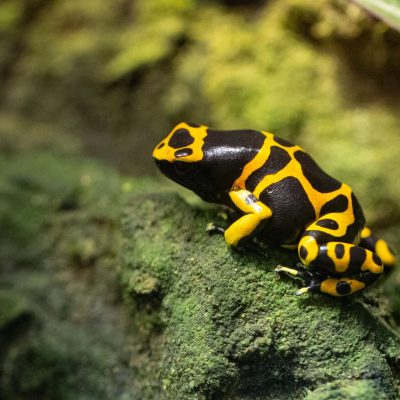About Poison Dart Frogs
Like other frog species, poison dart frogs begin as tadpoles. As they become adults, frogs grow limbs, loose their tails, develop lungs and onto land.
Adults are usually black with green or light blue spots or bands, though some species may be a wide variety of colors including metallic green, brown or yellow. These bright colors are believed to warn predators with color vision that they are poisonous.
Poison glands are located throughout the surface of their body and contain a toxin that affects the nervous system and muscles, causing paralysis and eventually respiratory failure. This poison is potent enough to immobilize animals as large as a monkey. This toxicity likely comes from the frog’s native diet, since frogs in human care are generally not toxic. These frogs only have one natural predator that has developed an immunity to their toxin: the fire-bellied snake.
Poison dart frogs are rarely still during the day. They are constantly searching for food and taking care of the young with distinctive hopping motions. These frogs are often solitary and territorial. Disputes over territory can lead to aggressive behavior including belly-to-belly grasps and a sporadic buzzing call. Males will use vocalizations to attract females for mating and to advertise territories.
Poison Dart Frog at the Akron Zoo
The zoo is home to several species of poison dart frogs, including green and black poison dart frogs, yellow-banded poison dart frogs and blue poison dart frogs. All of these species can be seen in our nocturnal animal building micro exhibit which shares their exhibit, found in Legends of the Wild.




